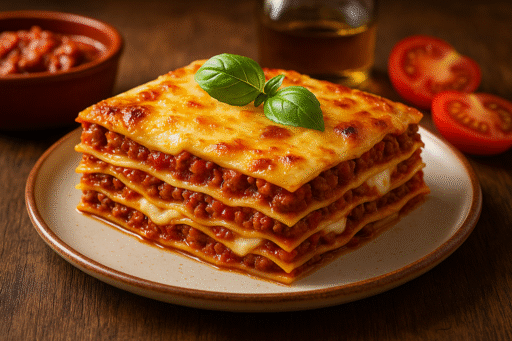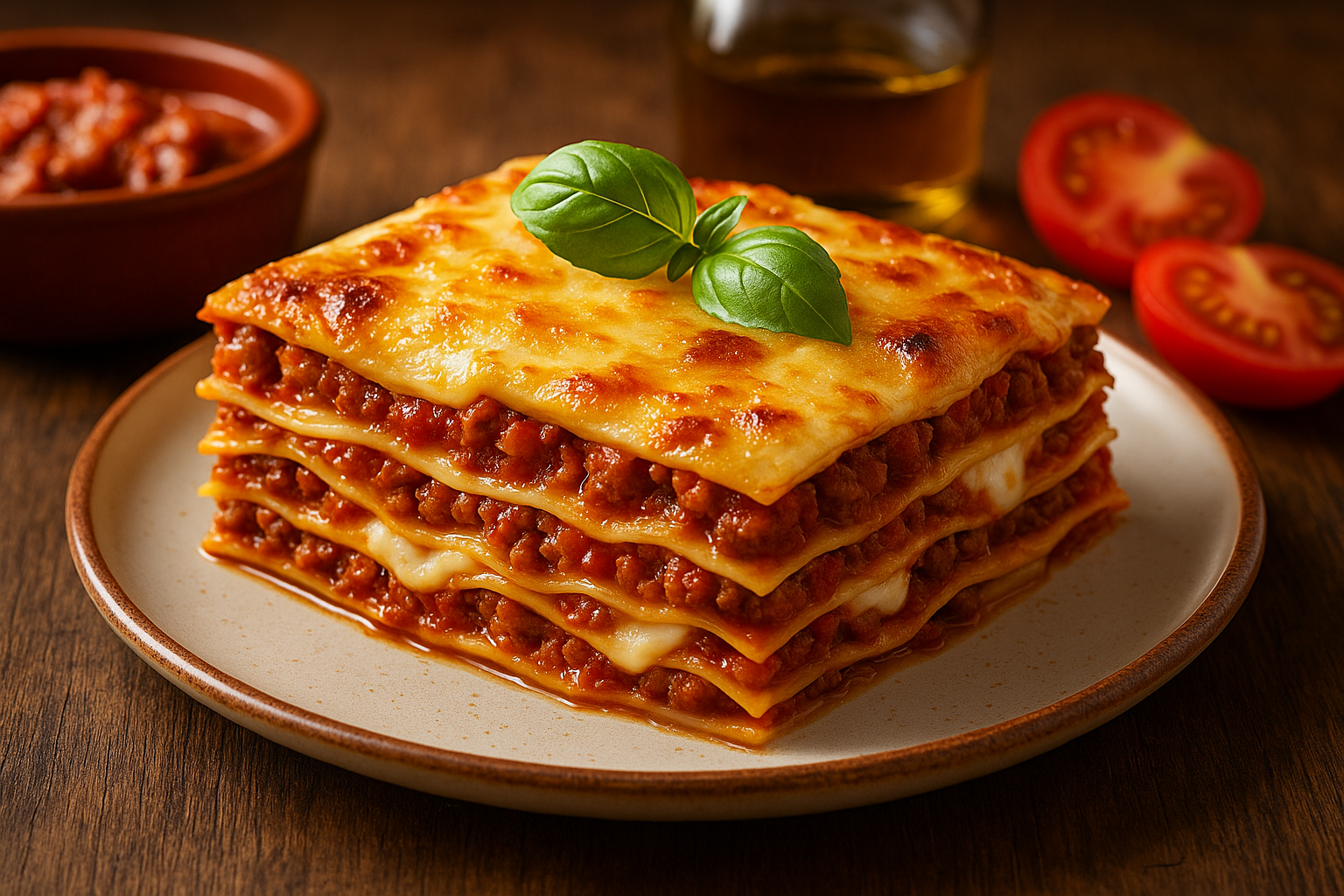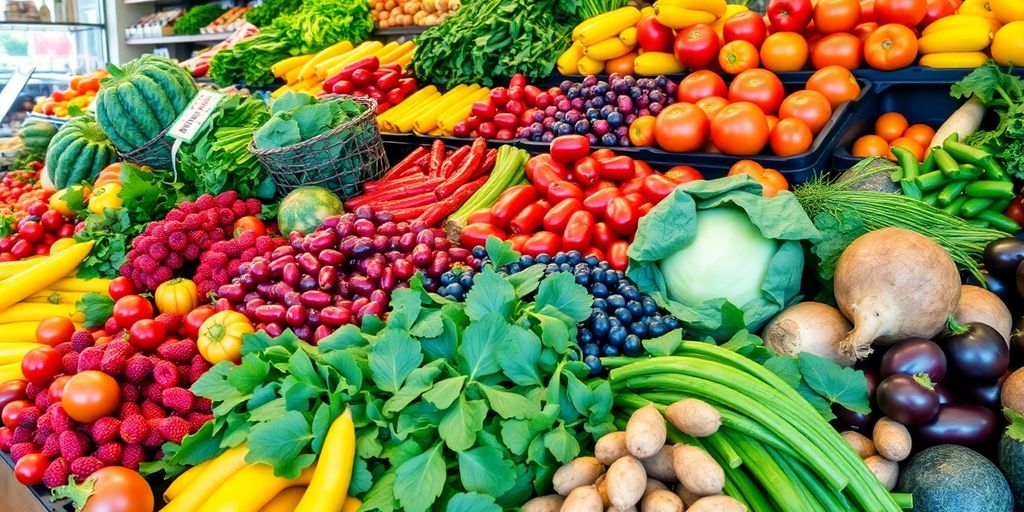Dreaming of sinking your teeth into la dolce vita by making an Italian classic in no time? Fall for this homemade lasagna bolognese recipe, whose pasta sheets reveal an irresistible tomato and ground beef filling, subtly softened by a creamy béchamel sauce. Gently baked in the oven and accompanied by a beautiful green salad (and some good friends), it makes dinner a real treat!
Preparation
1: Preparation of the tomato sauce
Peel and finely slice the onion and garlic clove. Sauté them over low heat in a saucepan with 2 tablespoons of olive oil until the onion becomes translucent. Add the tomato pulp, sugar, herbes de Provence, salt, and pepper. Simmer over low heat for 20 minutes.
2: Cooking the beef and adding it to the sauce
While the tomato sauce simmers, brown the ground beef in a skillet with 2 tablespoons of olive oil for 3 to 5 minutes over medium heat. Season with salt and pepper, then stir it into the tomato sauce. Let it simmer for a few more minutes.
3: Preparation of the béchamel sauce
In a saucepan, melt 70g of butter. Remove from the heat and whisk in the flour. Gradually pour in the milk, whisking constantly to avoid lumps. Return to low heat and let thicken, stirring regularly. Season with salt, pepper, and a pinch of nutmeg.
4: Assembling the lasagna
Preheat the oven to 180°C (gas mark 6). Grease the bottom and sides of a gratin dish with a little melted butter. Place a first layer of lasagna sheets, top with béchamel sauce, then add a layer of tomato sauce and beef filling. Sprinkle with grated Gruyère cheese. Repeat until all the ingredients are used up, finishing with a layer of béchamel sauce and grated Parmesan.
5: Cooking the lasagna
Bake the lasagna dish for about 45 minutes, until the top is golden brown and gratinéed. Check the pasta is cooked by pricking it with the tip of a knife.
6: Lasagna service
Let the lasagna rest outside of the oven for 5 to 10 minutes to make it easier to cut. Serve in attractive rectangular portions with a green salad.
Nutrition advice
Lasagna Bolognese is a staple of Northern Italian cuisine. It’s a complete, comforting, and nourishing dish. The pasta is a source of carbohydrates and fiber essential for gut health. The béchamel sauce provides saturated fats, as well as calcium and phosphorus essential for bone mineralization. The beef and tomato filling, meanwhile, is a source of quality protein, essential vitamins, and antioxidants. For a lighter version, the béchamel sauce can be made without butter and the amount of cheese can be slightly reduced.
Tips
For a lasagna bursting with indulgence and even more infused with the flavors of Italy, insert pieces of mozzarella between your layers, and serve it decorated with beautifully chopped basil leaves. If you don’t have the time (or the desire) to make a béchamel sauce, simplify the task: replace it with ricotta or mozzarella, as is customary in southern Italy!
Frequently Asked Questions
Can you make your own tomato sauce?
Yes, you can definitely use fresh tomatoes, when the season permits, instead of industrial tomato pulp. Slightly cut the tops of your tomatoes and place them in boiling water for 1 minute, then rinse them immediately under cold water. The skin will then peel off on its own. Next, cut your tomatoes into small cubes and continue following the steps indicated in the recipe.
What is the point of adding sugar?
Adding a little sugar helps reduce the acidity of the tomato. It’s also a flavor enhancer that will delight your taste buds.
My béchamel is too thick, what do you advise me to do?
You can add a little milk and stir well if your béchamel is a little too thick. Be aware that the béchamel will also thicken slightly as it cooks.
Why are the edges of my lasagna dry?
If the edges of your lasagna appear dry when it comes out of the oven, it’s probably because you didn’t spread the filling or béchamel sauce enough. Make sure to cover the edges with sauce to prevent the pasta from drying out during cooking.
Can we make a vegetarian version?
If you’d like to enjoy this lasagna dish vegetarian-style, simply replace the meat with vegetables. You can use zucchini or eggplant, for example.
How do I know if my lasagna is cooked properly?
To know if your lasagna is ready to be removed from the oven, we recommend inserting a knife into the middle of the dish: if the knife goes in easily without resistance, your lasagna is cooked.




